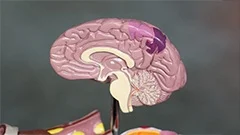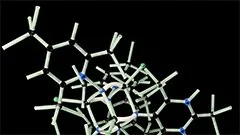Introduction
The act of breathing, also known as respiration, is a fundamental biological process that is crucial for the survival and functioning of all living organisms. In this comprehensive course, we will delve into the intricacies of breathing in animals, focusing primarily on vertebrates within the category of Animal Physiology.
Overview
The objective of this course is to provide a thorough understanding of the structure, function, and regulation of the respiratory system in various animal species. We will explore the processes involved in gas exchange, the role of key organs such as the lungs, nasal cavities, and diaphragm, and the mechanisms that ensure efficient breathing under varying physiological conditions.
Chapter 1: The Basics of Respiration
1.1 Definition and Importance of Respiration
In this section, we will discuss the definition of respiration, its significance for maintaining life processes, and the key components required for it to occur.
1.2 Gases Involved in Respiration
We will examine the gases that are essential for respiration: oxygen (O2) and carbon dioxide (CO2). Their roles, sources, and effects on the body will be elucidated.
1.3 Diffusion vs Active Transport
This part of the chapter will explain the two primary methods by which gases move across membranes, diffusion and active transport, and discuss their importance in respiration.
Chapter 2: Respiratory System Structure
2.1 Nasal Cavities and Pharynx
We will delve into the structure of the nasal cavities, pharynx, and their role in warming, humidifying, and filtering incoming air before it reaches the lungs.
2.2 Trachea, Bronchi, and Bronchioles
In this section, we will study the progression of the respiratory tract from the trachea to bronchioles, discussing their structure and function in gas exchange.
2.3 Alveoli and Capillaries
We will explore the structure of alveoli, the sites of gas exchange within the lungs, as well as capillaries, which facilitate this process by allowing direct contact between blood and air.
Chapter 3: Breathing Mechanisms and Regulation
3.1 The Diaphragm and Intercostal Muscles
We will examine the role of the diaphragm and intercostal muscles in breathing, discussing how their contraction and relaxation facilitate the movement of air into and out of the lungs.
3.2 Control of Breathing: Central and Peripheral Nervous System
This section will delve into the central and peripheral nervous system's role in regulating breathing, discussing the key neural pathways involved and their interaction with respiratory muscles.
3.3 Chemical Regulation of Breathing
We will investigate the chemical factors that influence breathing rate, including carbon dioxide levels, oxygen levels, and pH, as well as the mechanisms that ensure efficient gas exchange under varying conditions.
Chapter 4: Special Considerations
4.1 Breathing in Aquatic Species
In this section, we will discuss the unique challenges faced by aquatic animals during respiration and how they have evolved to overcome these difficulties.
4.2 Comparative Respiratory Physiology
We will compare and contrast respiratory systems across different animal species, highlighting key adaptations that have arisen in response to specific environmental pressures.
Conclusion
By the end of this course, you should possess a detailed understanding of the intricate mechanisms involved in breathing and the various ways these processes are adapted across different animal species. This knowledge will serve as a foundation for further exploration into related fields, such as physiology, biochemistry, and evolutionary biology.
MCQ: Test your knowledge!
Do you think you know everything about this course? Don't fall into the traps, train with MCQs! eBiologie has hundreds of questions to help you master this subject.
These courses might interest you
Create a free account to receive courses, MCQs, and advice to succeed in your studies!
eBiologie offers several eBooks containing MCQ series (5 booklets available free for each subscriber).




